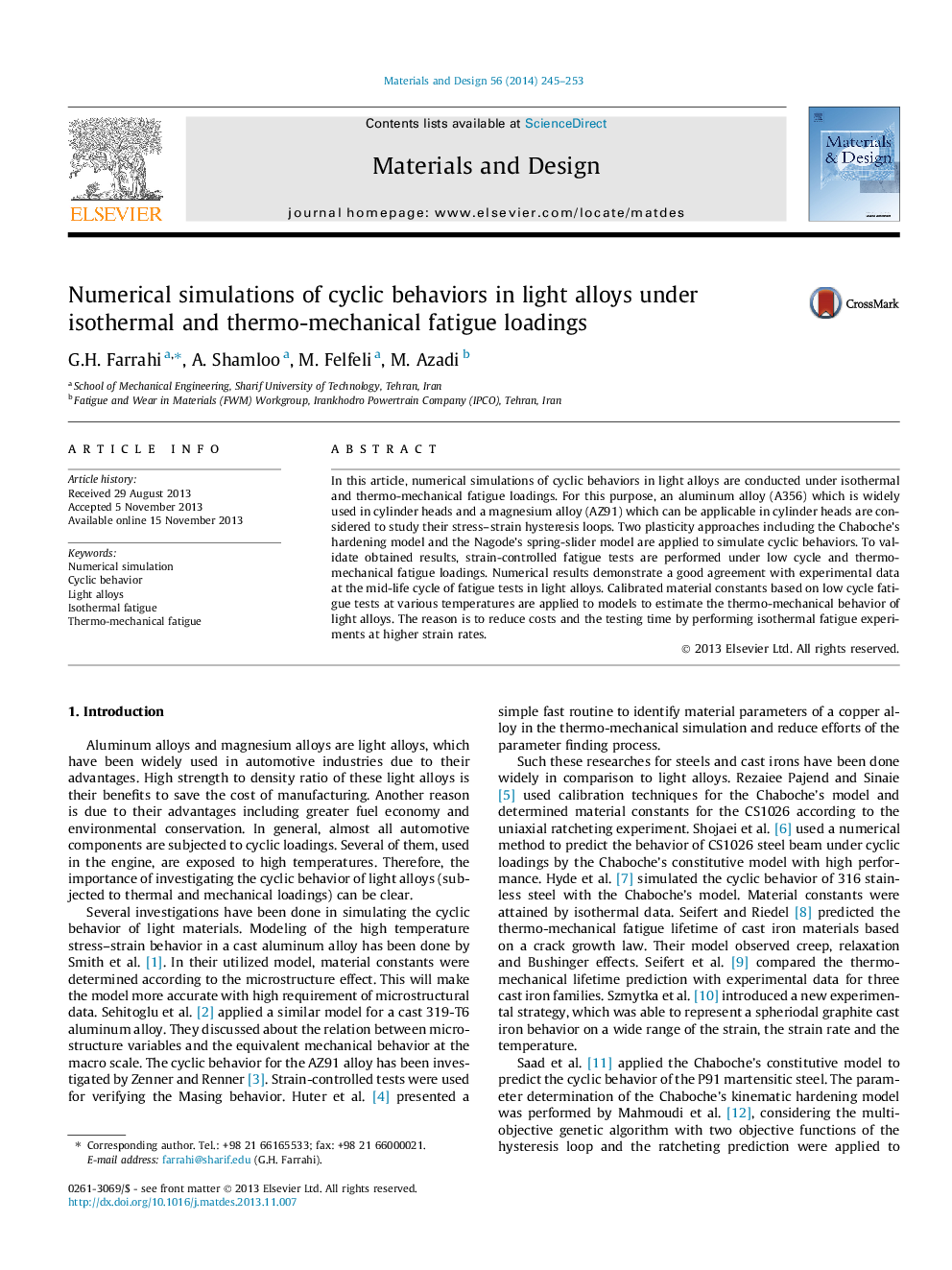| کد مقاله | کد نشریه | سال انتشار | مقاله انگلیسی | نسخه تمام متن |
|---|---|---|---|---|
| 829435 | 1470341 | 2014 | 9 صفحه PDF | دانلود رایگان |
• Numerical simulation of cyclic behaviors in light alloys (A356, AZ91) are performed.
• Chaboche’s hardening model and Nagode’s spring-slider model are applied.
• Simulating LCF/TMF behaviors are calibrated by strain-controlled fatigue tests.
• Applying material constants (by LCF data) is successful to predict TMF behavior.
• Visco-plastic behavior is considered for low strain rates and high temperatures.
In this article, numerical simulations of cyclic behaviors in light alloys are conducted under isothermal and thermo-mechanical fatigue loadings. For this purpose, an aluminum alloy (A356) which is widely used in cylinder heads and a magnesium alloy (AZ91) which can be applicable in cylinder heads are considered to study their stress–strain hysteresis loops. Two plasticity approaches including the Chaboche’s hardening model and the Nagode’s spring-slider model are applied to simulate cyclic behaviors. To validate obtained results, strain-controlled fatigue tests are performed under low cycle and thermo-mechanical fatigue loadings. Numerical results demonstrate a good agreement with experimental data at the mid-life cycle of fatigue tests in light alloys. Calibrated material constants based on low cycle fatigue tests at various temperatures are applied to models to estimate the thermo-mechanical behavior of light alloys. The reason is to reduce costs and the testing time by performing isothermal fatigue experiments at higher strain rates.
Journal: Materials & Design - Volume 56, April 2014, Pages 245–253
